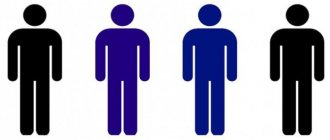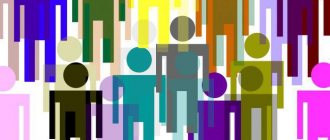Social mobility is, in social science, the process of moving members of society or individual citizens between social levels, changing the social status of individuals over time on the basis of life changes, self-development and improving one’s own skills. There is a distinction between high and low social mobility. A traditional society is characterized by a low, limited indicator. This is explained by the fact that an individual or a group of people observes hereditary traditions and remains committed to heredity and caste. Transition, change in social status is considered almost impossible.
Social mobility is fundamental in an industrial society. Here, the position of a citizen in society is regulated by his talents, knowledge and efforts. This includes work, the ability to rise to success, education, experience, and entrepreneurial abilities. Social mobility is measured by several indicators:
- Speed. Characterizes the vertical distance traveled by a citizen over a certain period of time. This could be advancement or, conversely, decline.
- Degree of intensity. The indicator is used to calculate the number of people who managed to change their horizontal or vertical position in society over a certain period of time.
About social status
The social status of an individual is not only a person’s place in the system of social relations, but also the rights and responsibilities dictated by his position. Thus, the status of a doctor gives the right to diagnose and treat patients, but at the same time obliges the doctor to observe labor discipline and conscientiously perform his work.
The concept of social status was first proposed by the American anthropologist R. Linton. The scientist made a great contribution to the study of the problems of personality and its interaction with other members of society.
Statuses exist in an enterprise, in a family, in a political party, in a kindergarten, in a school, in a university, in a word, wherever an organized group of people is engaged in socially significant activities and members of the group have certain relationships with each other.
A person is in several statuses at the same time. For example, a middle-aged man acts as a son, father, husband, engineer at a factory, member of a sports club, holder of an academic degree, author of scientific publications, patient in a clinic, etc. The number of statuses depends on the connections and relationships into which the individual enters.
Examples of social mobility
One of the main places for the development of social mobility is subsystems: universities, schools, colleges, technical schools. The student’s task is to study the given program. In case of successful passing of tests and tests, he moves to the next class. Subsequently, the student enters college, completes each course in turn, defends his diploma, and receives a profession.
If a student is kicked out of school, this is downward mobility. Entering a university is upward mobility. Another example is when a company employee saves money for a long time to start his own business. Having collected the required amount, he quits his job and starts doing business. His income level increases, his social status changes. An unexpected crisis negatively affects the business, the entrepreneur is forced to close his business, and he again returns to the status of an employee. First we see an example of upward mobility, then downward movement.
Types of social status
There are several classifications of statuses:
- Personal and social. A person occupies a personal status in a family or other small group in accordance with the assessment of his personal qualities. Social status (examples: teacher, worker, manager) is determined by the actions performed by the individual for society.
- Main and episodic. Primary status is associated with the main functions in a person's life. Most often, the main statuses are family man and worker. Episodic are associated with a moment in time during which a citizen performs certain actions: a pedestrian, a reader in a library, a course student, a theater viewer, etc.
- Prescribed, achieved and mixed. The prescribed status does not depend on the desires and capabilities of the individual, as it is given at birth (nationality, place of birth, class). What is achieved is acquired as a result of the efforts made (level of education, profession, achievements in science, art, sports). Mixed combines the features of the prescribed and achieved statuses (a person who has received a disability).
- Socio-economic status is determined by the amount of income received and the position that an individual occupies in accordance with his well-being.
The set of all available statuses is called a status set.
Horizontal and vertical mobility
Mobility is movement, a dynamic change in a person’s status. Social studies examines horizontal mobility and vertical mobility. These two concepts have different meanings. For example, vertical social mobility characterizes an individual’s movement up or down the social ladder. For example, a vertical type of position change is the promotion of a manager to a manager, or the demotion of a department head to a deputy head. Vertical social Mobility is a concept that can be implemented in two ways:
- Downward type of mobility. A person moves down the social ladder. For example, a large entrepreneur is forced to close several retail outlets because financial problems have arisen in the business. Or the cafe owner must sell his business to pay off his loans. He will have to get a hired job. The most negative outcome of downward mobility is lumpenization. An individual loses his status, confidence in himself and his own strengths, begins to use alcohol, drugs, sells property, loses housing, etc.
- Ascending type of mobility. The citizen moves up the social scale. For example, a salesperson in a shopping center receives a new position - store manager. Or an employee of a large company, who has been working for his boss for a long time, decides to open his own business. He receives the status of an individual entrepreneur, growth prospects, and increased income.
Horizontal social mobility is the movement of a person at one social level. This may include geographic migration, change of place of work while maintaining position and salary. For example, horizontal mobility is the transfer of an employee to another company for an identical position. At the same time, the salary remains the same, as does the range of responsibilities. The horizontal type of mobility can be represented by migration. People move between regions, cities, and countries in search of high-paying jobs, social protection, and political stability.
Hierarchy
Society constantly evaluates the significance of this or that status and, on the basis of this, builds a hierarchy of positions.
Assessments depend on the benefits of the business in which a person is engaged, and on the system of values accepted in the culture. Prestigious social status (examples: businessman, director) is highly appreciated. At the top of the hierarchy is the general status, which determines not only a person’s life, but also the position of people close to him (president, patriarch, academician).
If some statuses are unreasonably low, while others, on the contrary, are excessively high, then they speak of a violation of status balance. The trend towards its loss threatens the normal functioning of society.
The hierarchy of statuses can also be subjective. A person himself determines what is more important to him, in what status he feels better, what benefits he derives from being in one position or another.
The concept and criteria of social stratification of society
A stratum is a large group of people that differs from others in its position in the social structure of society.
Social stratification is a reflection of the differences that exist between different groups of people (classes and strata) in a particular society.
Simply put, social stratification of society refers to the relationship between layers of society, as well as certain social institutions.
Since each social structure is a collection of working social communities, it is possible to identify natural elements in it.
Elements of the social structure of society:
- ethnic (clan, tribe, nationality, nation);
- demographic (by age and gender);
- settlement (urban residents, rural residents);
- class (bourgeoisie, proletariat, peasants);
- vocational and educational.
Five main criteria of social stratification:
- Income is the amount of financial receipts for a certain period (month, year).
- Wealth is accumulated income.
- Power is the ability and ability to exercise one’s will, to influence the activities of other people through authority, law, violence and other methods.
- Education is knowledge, skills and abilities that are acquired in the learning process.
- Prestige is a public assessment of the attractiveness, importance of a profession, position, or hobbies.
There are three stratification levels:
- upper - the upper layers are in a more privileged position, have resources or opportunities to receive rewards, they are much smaller in number than the lower ones;
- middle - businessmen, managers, bureaucracy and specialists;
- lower - those who are below the poverty line, lumpen, marginalized.
Fact
The key to the stability of a modern economically developed society is the predominance of representatives of the middle class.
Social stratification exists in any society. Let's find out the reasons for its occurrence.
Change in social status
Social status cannot be something unchanging, since people's lives are not static. The movement of a person from one social group to another is called social mobility, which is divided into vertical and horizontal.
Vertical mobility is spoken of when an individual’s social status increases or decreases (a worker becomes an engineer, a department head becomes an ordinary employee, etc.). With horizontal mobility, a person maintains his position, but changes his profession (to one of equal status), place of residence (becomes an emigrant).
Intergenerational and intragenerational mobility are also distinguished. The first determines how much children have increased or decreased their status in relation to the status of their parents, and the second determines how successful the social career of representatives of one generation is (types of social status are taken into account).
The channels of social mobility are social institutions: school, family, church, army, public organizations and political parties. Education is a social elevator that helps a person achieve the desired status.
A high social status acquired by an individual or a decrease in it indicates individual mobility. If the status of a certain community of people changes (for example, as a result of a revolution), then group mobility takes place.
What is social mobility
Social mobility characterizes the dynamism of the economically active population. All members of society move through mobile channels. They move between social groups according to the following criteria:
- Obtaining marital status.
- Development of physical and mental abilities.
- Receiving foreign intervention.
- Moving, military conflicts, civil wars.
- Completion of military service.
- Graduation from school, university, courses.
- The appearance of children and grandchildren.
Recently, theory has begun to highlight another social factor of mobility – marginality. The concept means that a member of society is in an intermediate, uncertain state. Marginalized are individuals who are not part of a standardized social system. They reside on the boundary of a social class or structure. A striking example is unemployed people prone to bad habits, criminals, citizens who do not have a specific place of residence. Finding himself in a marginalized group, a person faces mental problems, a personal crisis, and loses his social identity. As a result, the individual becomes aggressive, opposes himself to the world around him, and breaks laws.
Social roles
While in one status or another, a person performs actions, communicates with other people, that is, plays a role. Social status and social role are closely interrelated, but differ from each other. Status is a position, and a role is socially expected behavior determined by status. If a doctor is rude and swears, and a teacher abuses alcohol, then this does not correspond to the status he holds.
The term “role” was borrowed from theater to emphasize the stereotypical behavior of people of similar social groups. A person cannot do as he wants. The behavior of an individual is determined by the rules and norms characteristic of a particular social group and society as a whole.
Unlike status, a role is dynamic and closely related to a person’s character traits and moral attitudes. Sometimes role behavior is adhered to only in public, as if putting on a mask. But it also happens that the mask fuses with its wearer, and the person ceases to distinguish between himself and his role. Depending on the situation, this state of affairs has both positive and negative consequences.
Social status and social role are two sides of the same coin.
Social mobility - types
In social science, several types of social mobility of individuals are distinguished:
- Individual type. A person moves horizontally in an upward or downward direction. The movement occurs regardless of third parties.
- Group type. Collective mobility. After the reorganization of the management team, there is a massive upheaval of the team. Former leaders are being replaced by new personalities.
- Movement within generations. A person's status changes within a generation. In most cases, people have to make a lot of effort to change their social position within one generation.
- Changes between generations. For example, a father works in a large metal structures manufacturing company as a leading engineer. The son learned a lot from his father. He opens his own plant for the production of metal elements.
Social mobility can also be organized or structural. In the organized form, a person or group of people changes status under the control of the state. This can be done with or without the consent of citizens. Structural changes are caused by certain economic circumstances. They occur for a reason beyond the control of citizens. For example, the production lines at the plant were updated, the system was automated, belt operators are no longer required, they are being reduced.
There is another classification of types of social mobility. There are four types of mobility:
- Individual type. One person changes his position in society. A company employee is sent on exchange to work at a foreign branch.
- Group type. A group of people is moving. The cause of large-scale moves and transformations can be an economic crisis, military conflict, or natural disaster.
- Organized type. State movement of citizens. For example, the forced relocation of residents from one region to another region.
- Structural type. Movements are carried out against the wishes of citizens. Reductions at the plant lead to an increase in the number of unemployed citizens. They are forced to learn new professions in order to find work.
Diversity of social roles
Since there are many people in the world and each person is an individual, it is unlikely that there will be two identical roles. Some role models require emotional restraint and self-control (lawyer, surgeon, funeral director), while for other roles (actor, teacher, mother, grandmother) emotions are very much in demand.
Some roles drive a person into strict frameworks (job descriptions, regulations, etc.), others have no framework (parents are fully responsible for the behavior of their children).
The performance of roles is closely related to motives, which are also different. Everything is determined by social status in society and personal motives. An official is concerned with promotion, a financier is concerned with profit, and a scientist is concerned with the search for truth.
Role set
A role set is understood as a set of roles characteristic of a particular status. Thus, a doctor of science is in the role of a researcher, teacher, mentor, supervisor, consultant, etc. Each role implies its own ways of communicating with others. The same teacher behaves differently with colleagues, students, and the rector of the university.
The concept of “role set” describes the whole variety of social roles inherent in a particular status. No role is strictly assigned to its bearer. For example, one of the spouses remains unemployed and for some time (and perhaps forever) loses the roles of colleague, subordinate, manager, and becomes a housewife (householder).
In many families, social roles are symmetrical: both husband and wife equally act as breadwinners, masters of the house and educators of children. In such a situation, it is important to adhere to the golden mean: excessive passion for one role (company director, businesswoman) leads to a lack of energy and time for others (father, mother).
Role Expectations
The difference between social roles and mental states and personality traits is that roles represent a certain historically developed standard of behavior. There are requirements for the bearer of a particular role. Thus, a child must certainly be obedient, a schoolboy or student must study well, a worker must observe labor discipline, etc. Social status and social role oblige one to act one way and not another. The system of requirements is also called expectations.
Role expectations act as an intermediate link between status and role. Only behavior that corresponds to status is considered role-playing. If a teacher, instead of giving a lecture on higher mathematics, starts singing with a guitar, then students will be surprised, because they expect other behavioral reactions from an assistant professor or professor.
Role expectations consist of actions and qualities. Taking care of the child, playing with him, putting the baby to bed, the mother performs actions, and kindness, responsiveness, empathy, and moderate severity contribute to the successful implementation of actions.
Compliance with the role being performed is important not only to others, but also to the person himself. A subordinate strives to earn the respect of his superior and receives moral satisfaction from a high assessment of the results of his work. The athlete trains hard to set a record. The writer is working on a bestseller. A person’s social status obliges him to be at his best. If an individual's expectations do not meet the expectations of others, then internal and external conflicts arise.
Status incompatibility
If the statuses that a person possesses contradict each other and introduce disharmony, incompatibility arises.
The process develops for 2 reasons:
- when a person occupies a high level in the first social group and a low level in another;
- if the rights and obligations in one position interfere with compliance with the rules established by the second status.
Incompatibility causes tension and dissatisfaction. Disharmony provokes disappointment in life.
Example of incompatibility
A native of the nineties, he made a good fortune and is now the owner of a large company. But he does not have a university education, and this is reflected in his lack of specific knowledge. A person has a high role as an entrepreneur, a rich person, and at the same time there is a low status of culture and education.
Professional athletes can also be cited as an example. They have authority and material well-being, but lack social power.
Role conflict
Contradictions between role holders arise either due to inconsistency with expectations, or due to the fact that one role completely excludes another. The young man more or less successfully plays the roles of son and friend. But the guy's friends invite him to a disco, and his parents demand that he stay at home. The emergency doctor's child falls ill, and the doctor is urgently called to the hospital because a natural disaster has occurred. The husband wants to go to the dacha to help his parents, and the wife books a trip to the sea to improve the health of the children.
Resolving role conflicts is not an easy task. Participants in the confrontation have to decide which role is more important, but in most cases compromises are more appropriate. The teenager returns from the party early, the doctor leaves his child with his mother, grandmother or nanny, and the spouses negotiate the timing of participation in dacha work and travel time for the whole family.
Sometimes the solution to the conflict is leaving the role: changing jobs, going to university, getting a divorce. Most often, a person understands that he has outgrown this or that role or that it has become a burden to him. A change of roles is inevitable as the child grows and develops: infant, toddler, preschooler, primary school student, teenager, young man, adult. The transition to a new age level is ensured by internal and external contradictions.
Socialization
From birth, a person learns the norms, patterns of behavior and cultural values characteristic of a particular society. This is how socialization occurs and the individual’s social status is acquired. Without socialization, a person cannot become a full-fledged individual. Socialization is influenced by the media, cultural traditions of the people, social institutions (family, school, work collectives, public associations, etc.).
Purposeful socialization occurs as a result of training and upbringing, but the efforts of parents and teachers are adjusted by the street, the economic and political situation in the country, television, the Internet and other factors.
The further development of society depends on the effectiveness of socialization. Children grow up and occupy the status of their parents, taking on certain roles. If the family and the state do not pay enough attention to the upbringing of the younger generation, then degradation and stagnation occur in public life.
Members of society coordinate their behavior with certain standards. These may be prescribed norms (laws, regulations, rules) or unspoken expectations. Any non-compliance with standards is considered a deviation, or deviation. Examples of deviation are drug addiction, prostitution, alcoholism, pedophilia, etc. Deviation can be individual, when one person deviates from the norm, and group (informal groups).
Socialization occurs as a result of two interrelated processes: internalization and social adaptation. A person adapts to social conditions, masters the rules of the game, which are mandatory for all members of society. Over time, norms, values, attitudes, ideas about what is good and what is bad become part of the inner world of the individual.
People are socialized throughout their lives, and at each age stage, statuses are acquired and lost, new roles are learned, conflicts arise and are resolved. This is how personality development occurs.
Social dynamics
Social statics and social dynamics
In previous lectures, we examined social statics - the structure, stratification, culture of society, which constitute the conservative element of social life. However, our way of life is also influenced by a wide range of dynamic forces: from technological innovations to urban growth and the bureaucratization of Russian society in 2000-2012. All societies are constantly transforming, but the speed of change varies.
Social dynamics are the result of inventions, discoveries, and cultural diffusion. Social change is often controversial. It is important to note that social dynamics are not the same as social progress.
Society exists as a system due to the fact that the various relationships between people are generally stable and orderly. Without sustainability, the functioning and development of society is impossible. Thus, when studying society, a tendency to staticity
, manifested in personal, economic, spiritual, political, and social life. Does this trend have any absolute value? Can a static society be considered ideal, perfect?
According to the results of historical research, humanity lived most of its history in the primitive era. If we compare the time of existence of humanity (from its origin to the present day) with daily time, it turns out that humanity lives after the primitive era for only a few minutes. What explains this “hibernation”? Primitive society was the most ossified, although simple, system. For centuries and millennia there were no noticeable changes.
Traditional society differs markedly from archaic society in terms of stability and orderliness. However, even in this society, any significant changes spanned several generations. During the life of one generation, practically the social order remained unchanged. Time in the minds of people, say, in the Middle Ages, existed as a cyclical repetition of events. The main principle of the culture of a traditional society is following tradition (“how our ancestors lived, so our grandchildren will live”).
A society in which only static and stability operates is like a huge soulless machine. In this mechanism, individuals and communities of people are “cogs” that firmly know their functions, but cannot change them.
In addition to social staticity, the second trend in the functioning and development of society is the dynamics of society
. This trend manifests itself as a process of transition of society from one state to another.
Social statics and dynamics are in dialectical unity. On the one hand, these are multidirectional trends, so contradictions inevitably arise between them. On the other hand, they mutually presuppose each other. The tendency to be static in the absence of a tendency to be dynamic leads to its stagnation (decay). The tendency of variability in the absence of a tendency of order leads to chaos and, as a result, to the destruction of society as a whole. One-sided dynamics lead to chaos. However, as Orwell rightly noted, it is not chaos that threatens us, but order. In archaic and traditional societies, in totalitarian modern states, the social statuses of people do not change during the life of an individual. And since people’s statuses do not change, society itself freezes in its development.
Social dynamics can be defined as changes in the technology of organizing society. Causes and factors of social dynamics: population growth, changes in the physical environment, technology, culture, social movements and social conflicts. Social dynamics in a particular society are strongly influenced by global processes. So, in the Russian Federation in 2000-2008. Governors of the constituent entities of the federation changed very rarely, which was a manifestation of political monopoly and, in turn, gave rise to economic and political stagnation. During these same years, the process of separation of state power and business, politics and economics was practically stopped. Government officials and security forces, while doing business, inevitably destroyed free competition - the main engine of development of a market economy. The development of the economy and the solution of social problems slowed down, and stagnation occurred in the development of spiritual culture and science. Thus, stagnation in politics and lack of rotation of the political elite led to stagnation in the economy, social and intellectual spheres. According to the theory of dynamic conservatism, socio-political systems are fighting to maintain the status quo, to not change anything. Therefore, political elites initially ignore signals of impending change, then begin to actively resist, and, in the end, try to keep the process of transformation within narrow limits. As for our country, the impetus for social dynamics was the global financial crisis of 2009.
Thus, in 2000, the middle class in Russia was 25%. According to the consumption criterion, the middle class is understood as the ability to buy household appliances from current expenses. In 2010, the number of middle class representatives dropped to 15-18%.
Social mobility
In societies in which social statics dominate completely, individuals and communities of people are almost forever attached to their place. Social statuses remain unchanged throughout a person's life. There are no changes in the social status of a person and the community of people, which means there are no changes in society itself. In primitive society, changes in a person’s position occurred only twice. The first time is when he, having undergone a special initiation rite, passes from children to adults, the second time when he turns into an old man. However, such changes in status occur cyclically, without causing changes in society.
In dynamically developing modern societies, on the contrary, every person and every community of people can repeatedly change their social status. People can change their profession, place of residence, place of work, or marital status. They can change the social class to which they belonged. As a result, society itself is changing rapidly.
Social mobility process
can be defined as
a change by individuals and communities of their social status, as a transition of an individual from one community to another community, from one stratum to another.
People, changing their places in society, make it mobile, mobile. As a result, society becomes not a frozen, static, but a mobile and dynamic social system. Therefore, social mobility can also be defined as the mobility of society.
Social mobility is expressed both in
the readiness
of the individual and social groups and layers to change their status (representing, as it were, the potential energy of society), and in the implementation of this readiness (“kinetic energy of society”).
Types of social mobility:
- class mobility;
- professional mobility;
- territorial mobility (migration);
- job mobility;
- economic mobility;
- family and household mobility;
- political mobility;
- spiritual mobility;
- information mobility.
As we see, types of mobility are associated with transitions in various types of stratification.
Social mobility can be individual
and
group.
Individual mobility is the movement of an individual in a social structure, and group mobility is the movement of communities of people in a social structure.
Each person makes many moves throughout his life: he moves from generation to generation, from one organization to another, from one position to another, he can change profession, place of residence, and sometimes even ethnic community. Thus, he changes his position in society. As for group mobility, it is possible, without committing to individual mobility, to become involved in group mobility.
Social mobility depends not so much on individual changes as on changes in society itself. For example, in the 20th century, industrialization led to economic growth, resulting in higher living standards. Figuratively speaking, even without being good swimmers, many people rode the wave of prosperity. Another fact. In 2008-2009 The financial crisis and downward structural mobility have worsened the economic situation of many Russians.
Social mobility is associated with changes in people's social status. From previous topics we know such types of social statuses as horizontal and vertical, prescribed and achievable. Consequently, according to how these types of statuses change, it is possible to identify the corresponding types of mobility.
First of all, we should highlight such types of social mobility as “ horizontal
" and "
vertical
". Horizontal mobility is a change in the functional status of a person or community. A person can acquire new professional functions without changing his profession. Moving to the city, he acquires new functions associated with the urban lifestyle. Thus, horizontal mobility in its content acts as functional mobility and characterizes a change in the functional status of an individual, group or layer.
Horizontal mobility, in turn, can exist in pro-functional and dysfunctional forms. Profunctional
mobility is characterized by the individual acquiring stable social functions (work, family, positions, etc.).
Dysfunctional
mobility, on the contrary, is characterized by the loss of one’s stable social functions (work, family, official, etc.), as well as the instability of the acquired functional status (temporary work, temporary housing, etc.).
Vertical mobility characterizes a change in the hierarchical status of the individual and the community. Vertical mobility characterizes movement in a system of social inequality.
Examples of vertical mobility include promotion or demotion, education, increase in income, political career or its failure, marriage of convenience, etc. Rising
mobility is a movement that will increase access to the economic, political, informational, spiritual and intellectual benefits of society, and the ability to influence other people.
Downward
mobility, on the contrary, leads to a decrease in access to society's resources and the ability to influence other people.
In practice, it is impossible to detect horizontal and vertical mobility in a “pure” form. The examples of functional mobility discussed above can simultaneously indicate vertical mobility, and vice versa, examples of vertical mobility can be considered as examples of horizontal mobility. A change of profession almost always affects the level of income, prestige, and position of a person. As a rule, a person moves simultaneously in several directions - horizontal, vertical, diagonal
etc.
Social mobility can in some ways be compared to a multi-storey building, in which you can move around both by stairs and by elevator. Indeed, in society some “rise” and “descend”, while others “raise” and “descend”.
«Social ladder
"is associated with the attainable status, and the "
social elevator
" is associated with the prescribed status of the individual or community. An example of social mobility associated with attainable social status is advanced training and, as a result, promotion of position. An example of social mobility associated with a prescribed status is promotion based on kinship with a superior manager.
There are such types of social mobility as intragenerational
and
intergenerational
mobility.
Intragenerational mobility characterizes movements in the biography of a generation or a person's pedigree. Intergenerational mobility characterizes the social dynamics of society. In static, little-changing societies, social statuses remain practically the same in the lives of several generations. Social inequality and social functions are thus inherited. Models of intergenerational mobility: the first model characterizes minor changes in the status of successive generations, the second model characterizes dynamic social movements. A
complete change in the system of social inequality can occur with extremely sharp, fundamental social changes in society, primarily as a result of social revolutions. Social revolutions lead to the destruction of the existing and the emergence of a new social structure, as a result of which changes in social status characterize almost all layers of society. This happened after the October Revolution of 1917, when the majority of the “tops” experienced downward mobility, and a significant part of the population moved out of the “bottoms.”
US sociologists studied the dynamics of income of American families over 20 years. The rich, who make up 20%, saw their income increase by 60%, the middle class increased by 20%, and the income of the poor increased by 10%. Successful people apparently improve their income more rapidly. During these same years, 40% of Americans experienced upward mobility (the children of blue-collar workers went into white-collar jobs). 30% of Americans have experienced downward social mobility, and 80% have experienced horizontal mobility (change of profession by people of the same class level)
As American sociologists have discovered, long-term mobility is usually upward. Intragenerational mobility is negligible. .Social mobility is usually limited to moving within one class level, but not to moving to another class. Interestingly, 53% of young people aged 18 to 24 live with their parents, which was not the case 10-15 years ago. This suggests that income growth has stalled for many workers. So, the economic crisis has caused the realization of the American dream to slow down.
The pace of social mobility depends, first of all, on the characteristics of the social structure of society. The deeper the division of labor, the greater the opportunities for social mobility. Society's ability to choose and change professions is expanding. In order to get a job or education, they often change their place of residence. Thus, with the expansion of the scope of social functions in society, with the complication of functional relationships, favorable opportunities for horizontal mobility are created.
The possibilities of social mobility also depend on the characteristics of the stratification of society. The longer the distance between social layers in the hierarchy of society, the more difficult it is to overcome it, even with all the efforts of a person. And vice versa, the shorter the distance between layers, the more a person’s upward mobility depends on his efforts and abilities. Therefore, in the “pyramidal” model of stratification of society, social mobility is quite inert, and in the “diamond-shaped” stratification, on the contrary, it is more inert. Overcoming social barriers thus depends not only on the efforts and abilities of people occupying one or another social position, but also on the objective features of the stratification of society. Under the pyramidal model of stratification, social movement is significantly less related to attainable social status than under the diamond model. Due to the fact that the diamond-shaped stratification consists of many social layers located above each other, which are separated by a relatively small social distance, overcoming them largely depends on the abilities and efforts of the individual. In pyramidal stratification, social distance is, as a rule, insurmountable, and the occupation of one or another rung of the social ladder depends on which community the individual belongs to.
Social distance with upward mobility in pyramidal and diamond-shaped models of stratification of society
Social mobility can also be voluntary
,
forced
and
forced
. Voluntary mobility is associated with the desire of an individual or community to change their social status in such a way as to find a better use of their abilities and more fully satisfy their needs. This may be due to the search for a new job and or place of residence, obtaining education or advanced training. Forced mobility occurs against people's wishes. It may be associated with the loss of a job or housing (for example, due to the closure of an enterprise). A special form of forced mobility is a forced change in the social status of an individual or entire social groups (forced mobility). Usually such people are called refugees. The reason for such mobility is wars, interethnic or interracial conflicts, political repression or restrictions on the rights of citizens by the state. Among the forms of forced mobility, the relocation of people from places of environmental disasters should also be noted.
Typically voluntary mobility
leads to
increased
social status.
And forced mobility
leads to
a decrease
. If there is a job in the new place, it is less paid or less qualified. The living conditions, legal status and other circumstances of forcibly displaced persons indicate a clear decrease in social status.
Stalin created a precedent for large-scale forced mobility in the USSR. Deportations were part of the repressive policies of the Stalinist state. The victims were various social groups, ethnic groups, and confessions. The first to be deported were the Koreans - 4 thousand families to Kazakhstan and Central Asia. More than 200 million rubles were allocated for their resettlement in 1937. And in 1948, the Koreans were again needed in the fishing industry and they made a temporary landing on their former homeland (the Far East). This is another 300 thousand rubles for shipping. This is just one example of “effective management”.
Several levels
of social mobility
.
The first is social mobility, which occurs at the level of society
.
Secondly, this is social mobility occurring at the regional
,
city
, and
village
levels .
Thirdly, this is social mobility at the level of the organization
(enterprise, institution).
Fourthly, this is social mobility at the level of a small group
(informal group, family, student group, etc.). A person can thus move simultaneously in the social structure of society at several levels.
In 2000 – 2008 Economists and sociologists have discovered the phenomenon of “silent emigration” in the Russian Federation. During these years, the number of our compatriots who left the country for permanent residence abroad increased. The reasons are different, but one of them is the high aggressiveness of the bureaucratic apparatus and law enforcement agencies of the state. Another reason: the lack of objective information associated with the decline in the professionalism of the official media, the level and quality of education, the absence of a progressive opposition in the country’s parliament, and the increase in the status of religious ideology and representatives of the religious elite. The economically active part of the population is tired of forceful solutions to economic problems.
Russia is a unique country among developed countries because it has highly skilled poverty. According to experts, our human potential corresponds to the level of advanced countries, and the social environment and the quality of social and government institutions are at the level of third world countries. Consequently, the problem of mobility at the level of society as a whole is of particular relevance.
A person or social group can move within the community or layer to which they belong. For example, a worker, improving his skills, moves in an upward direction within the working class. First-year students, having successfully passed their exams, will move up into the social structure of the university. Let us call such social movements that do not go beyond the boundaries of any community or layer intrasocial
mobility
.
Social movements can also go beyond communities and strata. Thus, a worker can, having received the appropriate education, become a foreman (low-level manager). After graduation, a student becomes a specialist. Such social movements that go beyond communities and strata can be designated as extrasocial mobility
.
Movements in the social structure of society can occur at different speeds. There are such facts of climbing the social ladder, which are described as a “dizzying career.” On the other hand, there are many cases of an equally rapid fall from the highest rungs to the bottom of society (as they say, “slipped”). Others make a slow ascent or descent down the social ladder.
Social mobility
personality presupposes a change only in its social place, but not yet in the personality itself. One cannot equate the social status of an individual with the social qualities of an individual. It is not always that a person, changing his social status, immediately acquires the qualities necessary to perform new social functions. This requires some time. Moving to a new social place and acquiring, accordingly, new social functions, a person faces the need to form new abilities, needs, motivation, etc. Therefore, social mobility is a necessary condition for the development of a modern personality.
At the same time, a certain gap is always inevitable between a change in the social status of an individual and a change in his social qualities. The extent of this gap depends on the social distance between the old and new statuses and the pace of social mobility. The longer the social distance, the faster the social movement of the individual, the more noticeable the gap between the social status and social qualities of a person. Thus, for a certain time, the individual finds himself in a borderline position: on the one hand, he occupies a new social status, and on the other hand, he has not acquired the necessary qualities to perform new social functions. This intermediate position of a person, characterizing his social mobility, is called marginality.
In the process of social mobility, marginality can be a social characteristic not only of individuals, but also of entire social groups or layers that have changed their social status. These groups or layers are called marginal
.
Thus, in the process of social movements, marginal class (“new Russians”), territorial (new settlers), professional (new workers in the process of growing a professional community) and other groups are formed. Those layers that change their position in the stratification system in an ascending or descending direction become marginal. These are, for example, representatives of many professions, belonging to which previously meant belonging to the middle strata (teachers, doctors, skilled workers, officers and others), who today find themselves among the poor.
It doesn’t always happen in society that, having left point “A”, everyone necessarily ends up at point “B”. The consequence of social mobility can be not only the acquisition of a new status. Many, having lost their social status, do not acquire a new one. People may be left without jobs, thus losing their professional and class status. Some find themselves without a place of residence, having lost their socio-territorial status and, as a rule, class and professional status. Having lost his status, an individual also loses many of his social functions. Consequently, he finds himself outside the social-functional structure of society as an “extra” person. Without performing the most important social functions, a person can lose many of his social qualities and, as a result, degrade as a person. Usually in the scientific literature, those who lose their stable social status are usually called “ lumpen
".
In the process of social movements, entire layers of people are formed who have largely lost their social identity (“declassed”), who are called lumpen.
The proportion of lumpen layers may vary. During periods of recession and crisis (2009, for example), unemployment increases, which leads to an increase in the lumpenization of society. During periods of economic growth, on the contrary, there is a slight decrease in the share of the lumpen strata in the social structure of society.








